Introduction
As climate change continues to intensify, extreme weather conditions—scorching summers and freezing winters—have become the new norm. Fashion, once primarily about style, is now evolving to include functionality and adaptability in response to these environmental shifts. Climate-proof fashion focuses on weather-adaptive clothing that ensures comfort, protection, and sustainability in the face of unpredictable conditions.
In this article, we explore how to build a wardrobe that can withstand extreme heat and cold, the latest innovations in climate-responsive textiles, and practical styling tips for year-round adaptability.
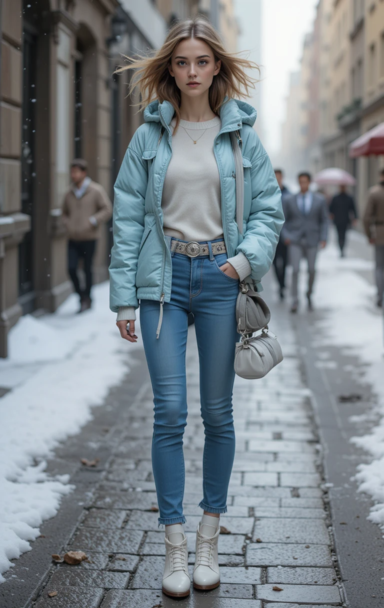
The Need for Climate-Proof Fashion
1. Rising Temperatures and Heatwaves
Global temperatures are reaching record highs, leading to unbearable heatwaves that can cause dehydration, heat exhaustion, and sunburn. Traditional clothing materials often fail to provide adequate breathability and UV protection.
2. Harsh Winters and Freezing Conditions
At the other end of the spectrum, some regions are experiencing longer and more severe winters with sub-zero temperatures, making thermal insulation and moisture control essential for daily wear.
3. Sustainability Concerns
The demand for season-specific wardrobes leads to overconsumption and increased textile waste. A climate-adaptive wardrobe prioritizes versatility and sustainability, reducing the need for excessive clothing purchases.
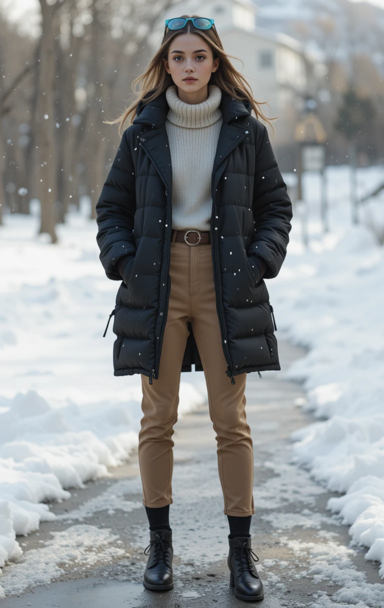
Climate-Adaptive Clothing for Extreme Summers
Key Features of Hot Weather Clothing
- Breathable and Moisture-Wicking Fabrics: Helps sweat evaporate quickly, keeping the body cool.
- UV Protection: Shields skin from harmful sun exposure.
- Loose, Airy Designs: Encourages airflow and reduces heat retention.
- Light Colors: Reflect heat instead of absorbing it.
- Multi-Functional Pieces: Convertible clothing that adapts to changing temperatures.
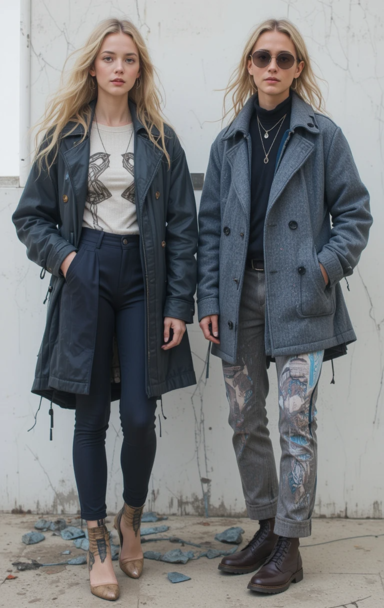
Best Fabrics for Hot Weather
- Linen: Lightweight and moisture-absorbing.
- Cotton: Breathable but best in looser weaves.
- Bamboo: Naturally antibacterial and cooling.
- Tencel (Lyocell): Soft, moisture-wicking, and sustainable.
- Performance Synthetics: Designed for quick-dry and sweat-wicking properties.
Essential Clothing Pieces for Extreme Summers
1. UV-Protective Shirts and Tops
Clothing with built-in UPF (Ultraviolet Protection Factor) shields skin from sun damage. Long-sleeved, lightweight tops made from UV-resistant fabrics provide protection without overheating.
2. Breathable Bottoms
- Wide-leg linen or cotton pants allow for air circulation.
- Midi skirts and breathable shorts keep legs cool while offering mobility.
- Performance leggings with mesh panels offer a balance of coverage and ventilation.
3. Cooling Dresses and Jumpsuits
Loose-fitting dresses and jumpsuits with open backs, cut-outs, or breathable mesh inserts help with heat dissipation.
4. Adaptive Footwear
- Sandals with arch support and breathable materials prevent overheating.
- Lightweight sneakers with mesh uppers ensure comfort for active wearers.
5. Functional Accessories
- Cooling Scarves: Soak in cold water for a cooling effect.
- UV-Protective Hats: Wide-brimmed styles shield the face and neck.
- Sunglasses with UV Coating: Essential for eye protection.
- Hydration-Backpacks or Cooling Vests: Useful for outdoor activities.
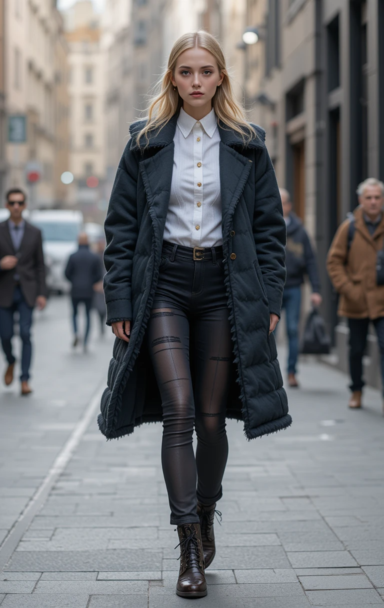
Climate-Adaptive Clothing for Harsh Winters
Key Features of Cold Weather Clothing
- Thermal Insulation: Retains body heat and protects against cold winds.
- Waterproof & Windproof Layers: Prevents heat loss in wet and stormy conditions.
- Moisture-Wicking Base Layers: Keeps sweat away to avoid chills.
- Adjustable Layers: Allows for temperature regulation.
- Smart Fabrics: Heat-trapping or self-heating materials.
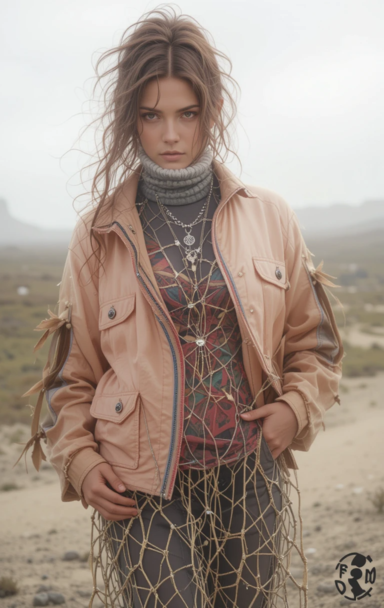
Best Fabrics for Cold Weather
- Merino Wool: Soft, breathable, and excellent for insulation.
- Alpaca and Cashmere: Provide superior warmth without bulk.
- Fleece: Retains heat and dries quickly.
- Thinsulate and Down: Lightweight yet highly insulating.
- GORE-TEX & Other Waterproof Technologies: Keep moisture out while allowing breathability.
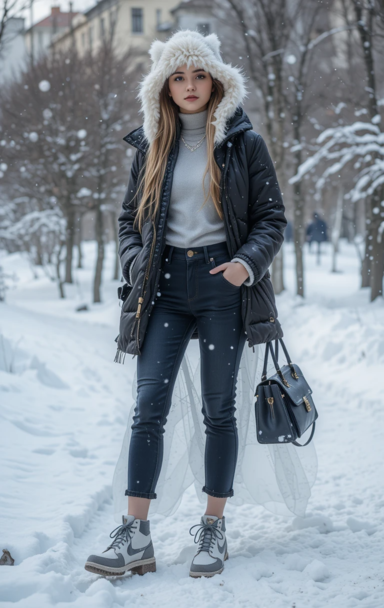
Essential Clothing Pieces for Extreme Winters
1. Insulating Base Layers
- Merino wool or thermal base layers trap heat close to the skin.
- Moisture-wicking long-sleeve tops and leggings prevent sweat buildup.
2. Mid-Layers for Warmth
- Fleece or insulated vests provide warmth without adding excessive weight.
- Chunky knit sweaters offer both style and functionality.
3. Outerwear for Extreme Cold
- Puffer Jackets with Down or Synthetic Fill: Provide maximum insulation.
- GORE-TEX or Waterproof Parkas: Essential for snowy and rainy conditions.
- Windproof Shell Jackets: Layer over sweaters for added warmth.
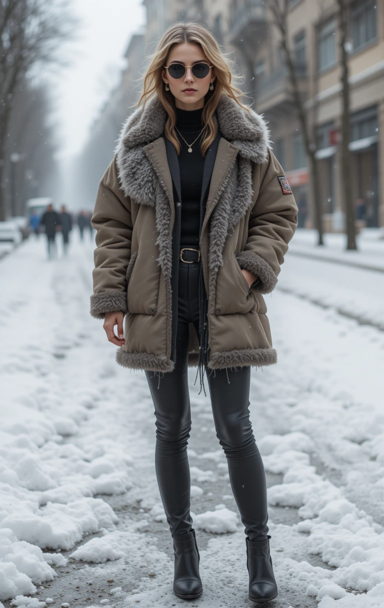
4. Weather-Resistant Bottoms
- Thermal-lined leggings or fleece-lined jeans offer protection from the cold.
- Waterproof ski or snow pants shield against freezing winds and moisture.
5. Cold-Weather Footwear
- Insulated, waterproof boots with rubber soles for traction.
- Wool or thermal socks to retain warmth.
- Heated insoles or battery-powered heated boots for extreme conditions.
6. Functional Accessories
- Touchscreen-Compatible Gloves: Keeps hands warm while using devices.
- Thermal Scarves and Balaclavas: Shields the neck and face.
- Beanies and Ear Warmers: Traps heat at the extremities.
- Smart Heated Wearables: Battery-operated heated jackets and gloves.

The Future of Climate-Proof Fashion: Innovations & Trends
1. Smart Textiles & Wearable Technology
- Self-Cooling Fabric: Infused with phase-change materials that regulate temperature.
- Self-Heating Clothing: Uses graphene or battery-powered heat.
- Aerogel Insulation: NASA-inspired materials that provide warmth without bulk.
2. Modular & Adaptive Clothing
- Convertible Jackets & Pants: Detachable layers adapt to shifting temperatures.
- Reversible Clothing: Provides dual functionality (warm vs. cool sides).
- Packable Outerwear: Folds into compact forms for easy travel.
3. Sustainable Innovations
- Bio-Based and Recycled Fabrics: Reduces reliance on synthetic fibers.
- Circular Fashion: Clothing designed for longevity, recyclability, and minimal waste.
- Water-Free Dyeing Techniques: Lowers environmental impact.
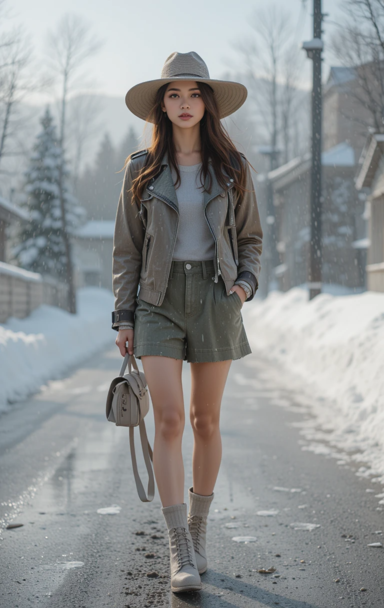
How to Build a Year-Round Climate-Adaptive Wardrobe
- Invest in Quality, Not Quantity – Choose durable, performance-driven clothing over fast fashion.
- Layering is Key – A mix of lightweight, insulating, and waterproof pieces maximizes versatility.
- Choose Smart Accessories – UV-blocking sunglasses, self-heating wearables, and moisture-wicking socks enhance adaptability.
- Opt for Timeless, Multi-Seasonal Pieces – Neutral tones and classic designs ensure longevity.
- Prioritize Comfort & Functionality – Ergonomic fits and breathable fabrics improve overall wearability.
- Stay Updated on Climate Innovations – New fabric technologies continue to improve weather adaptability.
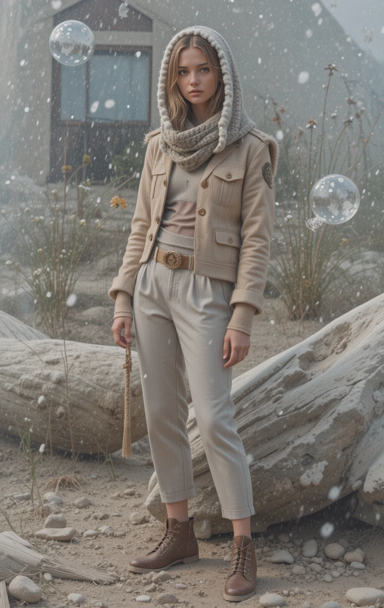
Conclusion
Extreme summers and winters demand a climate-proof approach to fashion that balances protection, comfort, and sustainability. By embracing smart layering, advanced textiles, and sustainable designs, individuals can build weather-adaptive wardrobes that offer style and functionality throughout the year.
As climate conditions become increasingly unpredictable, investing in seasonless, climate-resilient clothing is not just a fashion trend—it’s a necessity for future-proof dressing.



